The NEC D3724 was formally announced on May 10th, 1995. These drives were somewhat of a stopgap solution for NEC, in order to remain competitive in the rapidly changing drive market at the time. These drives remained in production until early-mid 1997, slowly being replaced with the DSE series as platter densities exploded.
Intriguingly, NEC released the D3724 alongside the D3726, yet both drives have entirely different external designs. The D3724 consists of a more conventional cast surrounding base with a top plate bolted on, whereas the D3726 has a very similar construction to the previous D3711-era drives, as an example. Seemingly, this HDA design started and ended with the D3724. Let’s see how it holds up over 26 years later.

Drive Attributes ------------------------------------- NEC D3724 ------------------------------------- Capacity 426MB Mfc Date 1996-01 Format 3.5" Interface PATA Platters 1 Heads 2 RPM 4090 CHS 827/16/63 (translated) -------------------------------------
These drives offer a bizarrely modern-looking exterior, mainly due to the similarity in construction these drives hold to how drives are manufactured today.

NEC always used relatively uncommon colours for their drive labels, which remains the case with these models. We’re met with a fairly understated shade of what can closely be described as aquamarine. Aside from the flashy colours, NEC’s labels remain short and sweet, providing only the most useful information with no space spared. This particular drive was manufactured in Japan, but NEC’s subcontractor in the Philippines (Tsukiden Electronics Industries, Inc. (TEII)) were also a producer of this model.
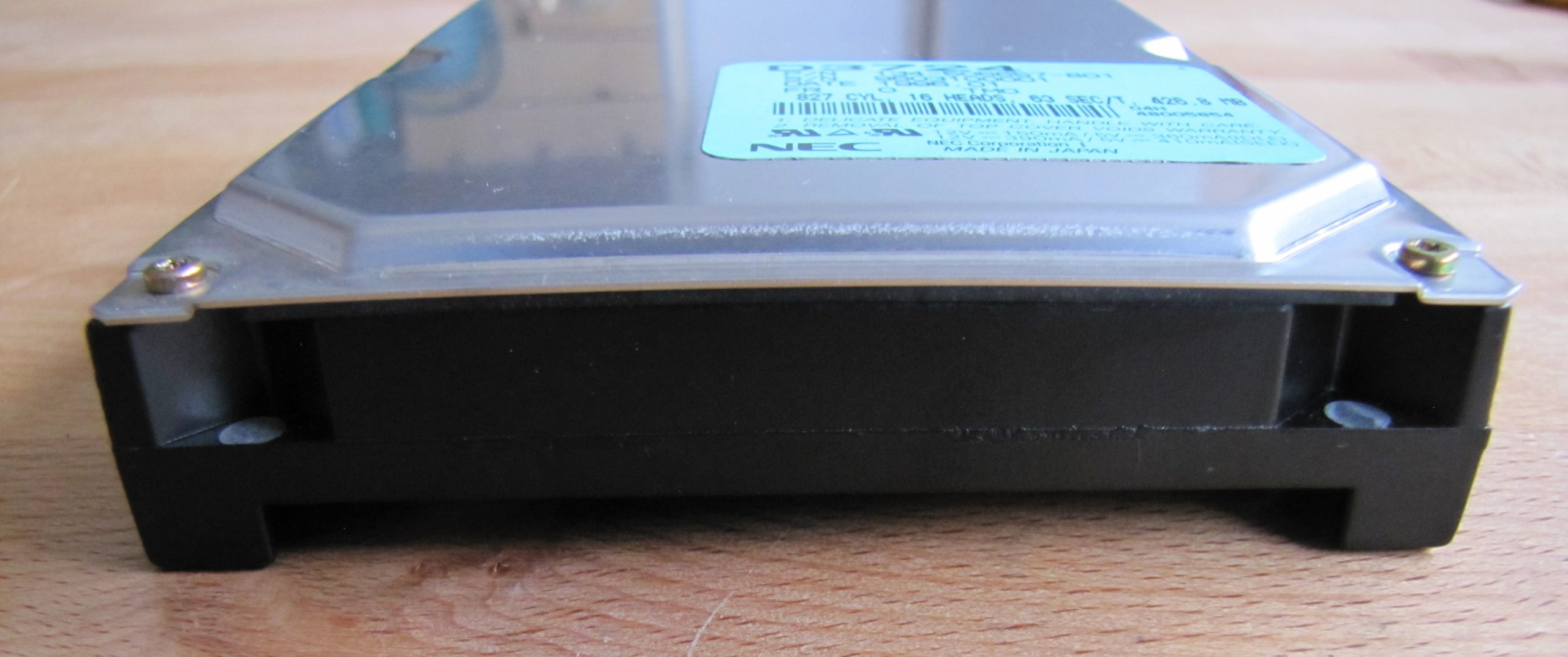
It’s clear to see how NEC adapted their previous designs into this one, simply raising the sides of the base casting and constructing a new top-plate design.

As usual, the standard IDE and Molex connectors are present. NEC always had a fairly unique way of placing their jumper blocks on their drives, which is another feature this drive shares with previous architectures, as is shown below.

Looking closer at the PCB, this drive still features many in-house IC designs from NEC themselves, which is something they’ve always been quite fond of doing. There are a huge number of similarities with this PCB layout, as compared to their older models, which is completely logical. Comparatively, NEC elected to use Samsung for the buffer RAM (as opposed to Sony on previous models) alongside switching out the controller IC from a Sony chip to an in-house NEC chip. Aside from that, these PCB’s share a large amount of common ground with models such as the aforementioned D3711.
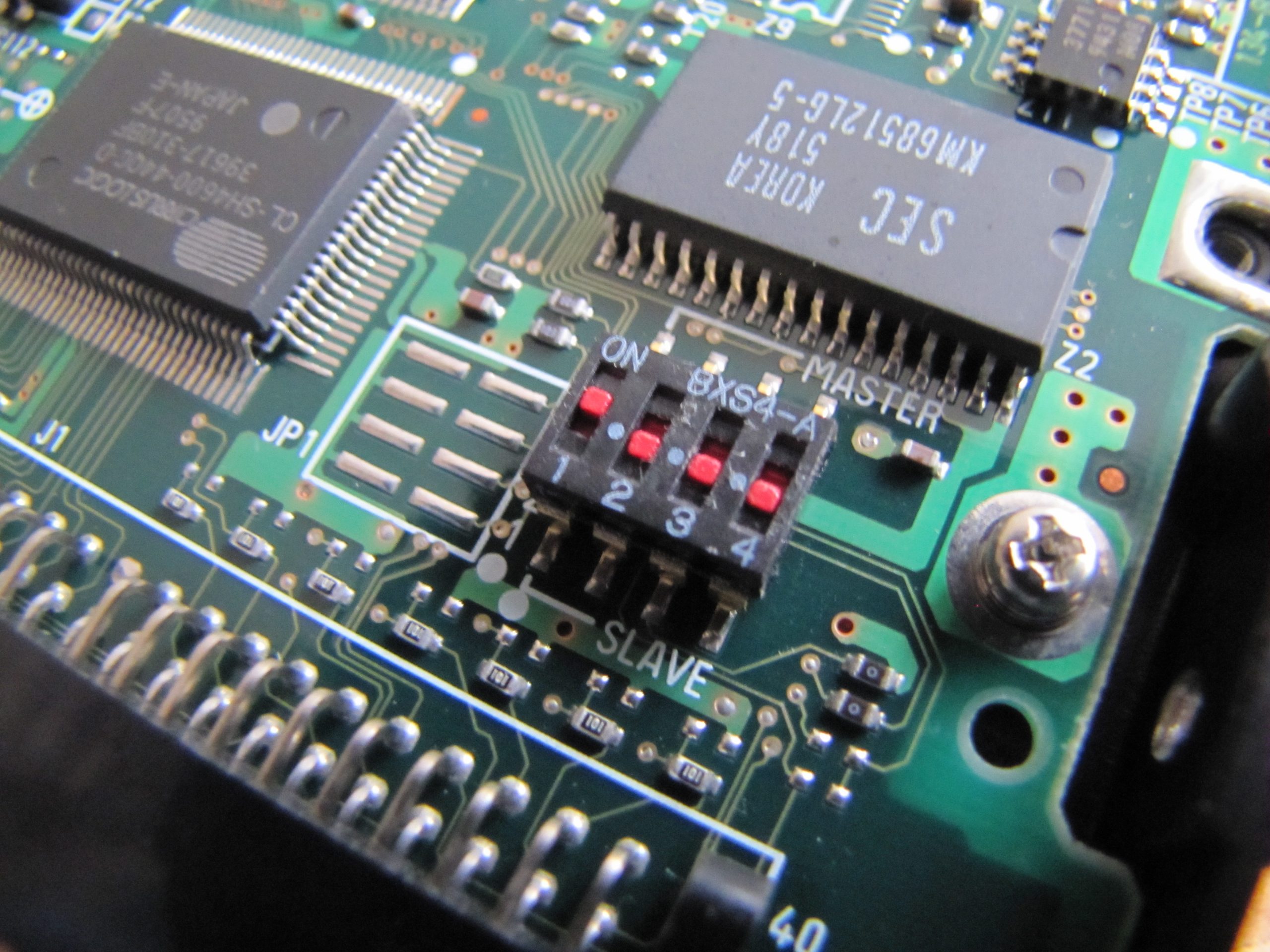
Much like previous models, NEC surface mounted the jumper switch module directly onto the PCB, as opposed to a more conventional pin block array. The configuration modes of this jumper block are as follows:
Jumper Settings
===============
| |
SW1 | |
+---------------+ON ++ ++
|+-+ +-+ +-+ +-+| \ /
||x| |x| |x| |x|| \/
|+-+ +-+ +-+ +-+| AT IF Connector Side
+-1---2---3---4-+OFF
| | | +-------------- ALWAYS SETS OFF
| | +------------------ ALWAYS SETS OFF
| +---------------------- CSEL (Cable Select)
| ON - effective
| OFF - ineffective
+-------------------------- M/S
ON - MASTER
OFF - SLAVE
Furthermore, these drives sport the usual external LED header, labelled J8 on the PCB. The pinout is as follows:
J8 LED Connector
----------------
2 1
+--------+
| | | |
+--+--+--+
++++-++-++
+++-++-+
| +---- Anode Side
+-------- Cathode Side
PCB closeup:

Of course, a drive as rare as this needs a full inspection! Looking underneath the PCB shows why NEC drives have a very particular spindle motor sound.

As is usual with most drives reigning from this era, we’re greeted with some foam. Fortunately, it remains in relatively decent condition on this drive. The head-stack connector pin array is present to the south-side of the drive, as expected.

The ribbon cable from the pin array interface is quite creative! Usually, spindle motor power lines are seperated from being close to data lines, but on this drive NEC elected to place them directly alongside the usual head-stack interface connector.

A distinctive point of NEC’s spindle motor sound lies with their use of PM DM-T as a motor supplier. As discussed in my post covering the DSE1700A series, PM DM-T were known as Precision Motors Deutsche Minebea, but in the modern day (after merging with Mitsumi) are known as MinebeaMitsumi. Most other drive manufacturers used the likes of Nidec or JVC as their primary motor suppliers during this era, which makes NEC drives sound just a little different when in operational condition.

The underside of the PCB’s on these drives are very nicely laid out, with no components on the rear-side. It would have been a nice change to see NEC flip their PCB’s around, when concerning mounting. Nonetheless, heat management, alongside no essential necessity, likely resulted in NEC never following the likes of Western Digital when it concerns reducing the likelihood of reducing ESD damage.
NEC’s press release covering the unveiling of these drives (which you can find here) is only available in Japanese, so I translated and re-formatted it below:
NEC D3724 & D3726 Press Release
May 10, 1995 – NEC Corporation
“In order to strengthen its already existing 3.5-inch magnetic disk unit position, NEC has announced the “D3724”, a 3.5-inch magnetic disk unit with a storage capacity of 426MB, alongside the “D3726” with a storage capacity of 853MB. Both have been commercialised and launched today.
These two new products are positioned as mid-range models in NEC’s 3.5-inch magnetic disk lineup, which offer optimal capacities, mainly for the domestic PC market.
The main features of these new products are:
- By adopting “PRML” (a demodulation technique, which stands for partial-response, maximum liklihood) technology, which enables efficient reading capabilities, the storage capacity per platter has increased by 16% compared to previous models, from 365MB to 426MB.
- By adopting “PIO Mode 3” as a high-speed data transfer protocol, the data transmission capability of 11.1MB per second is attained.
- Maximum power consumption remains at 1.5A, being equal to previous drive models. As a result, existing power supplies can be used with these drives, without incompatibility.
The “D3724” has a sample price of 50,000 yen, whereas the “D3726” has a sample price of 70,000 yen. Sample shipments begin in June of this year. Mass production of these models is scheduled to begin in August of this year, with an expected output of 50,000 units per month for both OEM and internal use.
In recent years, the demand of 3.5-inch magnetic disk units in the domestic personal computer market has been moving from a conventional 300MB per-platter classification, to a 400MB per-platter classification.
NEC has previously developed a 3.5-inch magnetic disk unit, the “D3896” (5 platters), with a maximum formatted capacity of 2.16GB, alongside the “D3743” (1 platter) with a storage capacity of 540MB and the “D3723” (1 platter) with a storage capacity of 365MB. However, due to recent market trends in the domestic personal computer segment, we have launched a mid-range model to strengthen our product lineup.
Please refer to the links below for an overview and main specifications chart for these new models:
Attachment 1: Overview/outline of the “D3724” and “D3726” (in Japanese only, external link)
Attachment 2: Main specifications of the “D3724” and “D3726” (in Japanese only, external link)
[External links refer to NEC.co.jp]
Main Specifications Chart
| Item | Specifications | |
|---|---|---|
| Model | D3724 | D3726 |
| Storage Capacity (formatted, in MB) | 426 | 853 |
| Platters Heads | 1 2 | 2 4 |
| Read/Write Speed Host Transfer Rate | 4.1 to 7.2 (MB/s) 11.1 (MB/s, PIO Mode3) | 4.1 to 7.2 (MB/s) 11.1 (MB/s, PIO Mode3) |
| Average Seek Time | 14ms | 14ms |
| RPM | 4,090 | 4,090 |
| Average Rotational Waiting Time | 7.33ms | 7.33ms |
| Recording Method | 8-9PRML | 8-9PRML |
| Bit Density (per inch) | 85,500 | 85,500 |
| Track Density (per inch) | 3,800 | 3,800 |
| Force Limit (during operation) | 5G | 5G |
| Force Limit (when not in use) | 75G | 75G |
| Operating Temperature Range (°C) | 5-55 | 5-55 |
| Supply Voltage (DC) | +12, +5 | +12, +5 |
| Power Consumption (during Read/Write) | 4W | 4W |
| MTBF (POH) | 300,000 | 300,000 |
| External Dimensions (H x W x D, mm) | 25.4 x 101.6 x 146 | 25.4 x 101.6 x 146 |
| Weight (grams) | 600 | 600 |
Reference: NEC Corporation (1995), Press Release May 10, 1995 (報道関係各位, 平成7年5月10日), 3.5インチ磁気ディスク装置の製品ラインアップ強化について (Strengthening the product lineup of 3.5-inch magnetic disk units), available at: http://www.nec.co.jp/press/ja/9505/1001.html (data acquired on 2022-11-16)
As the press release mentions, these drives came in at 50,000 yen (equating to ~$350USD/€350, as of 2022-11-16, not accounting for inflation), which really demonstrates the cost barriers holding drives back during this era. Seeing as these were mid-range drives, the price alone is difficult to swallow, especially when considering the prices of drives now in the modern day.
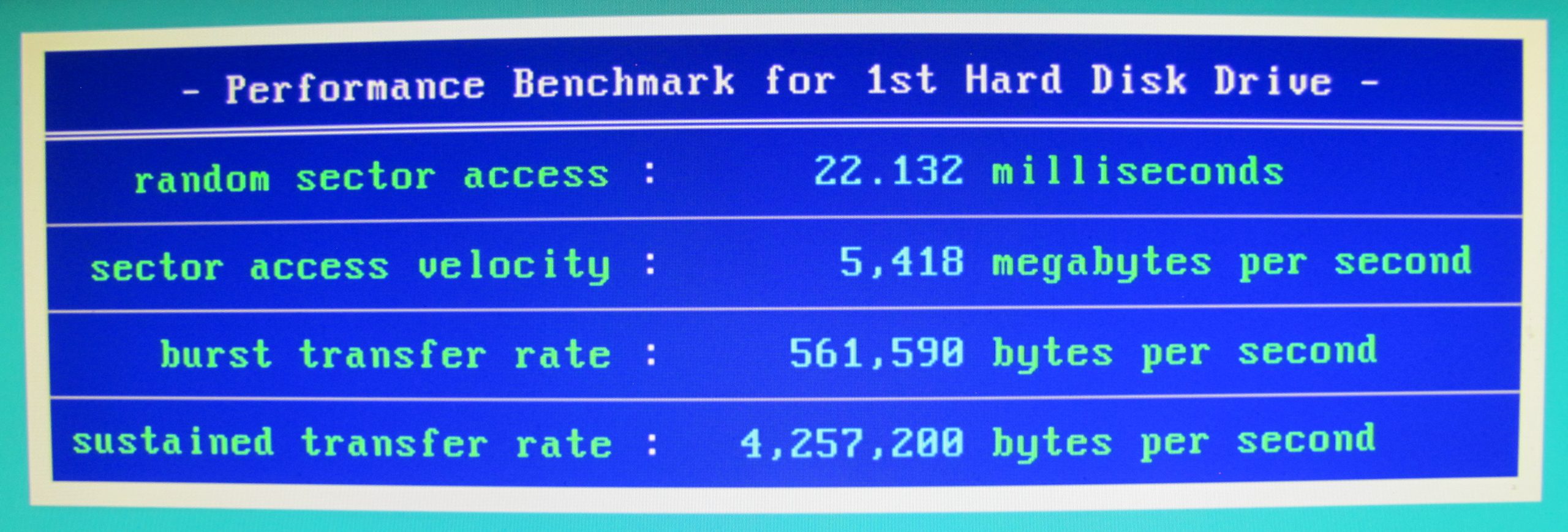
Similarly with many IDE-bus NEC models, these drives don’t support seek-time benchmark modes (at least whichever mode speedsys uses). Being mid-range drives, performance wasn’t their main goal in the first place. Nonetheless, they perform quite well being 426MB drives, which isn’t surprising given the higher densities these have compared to older models.
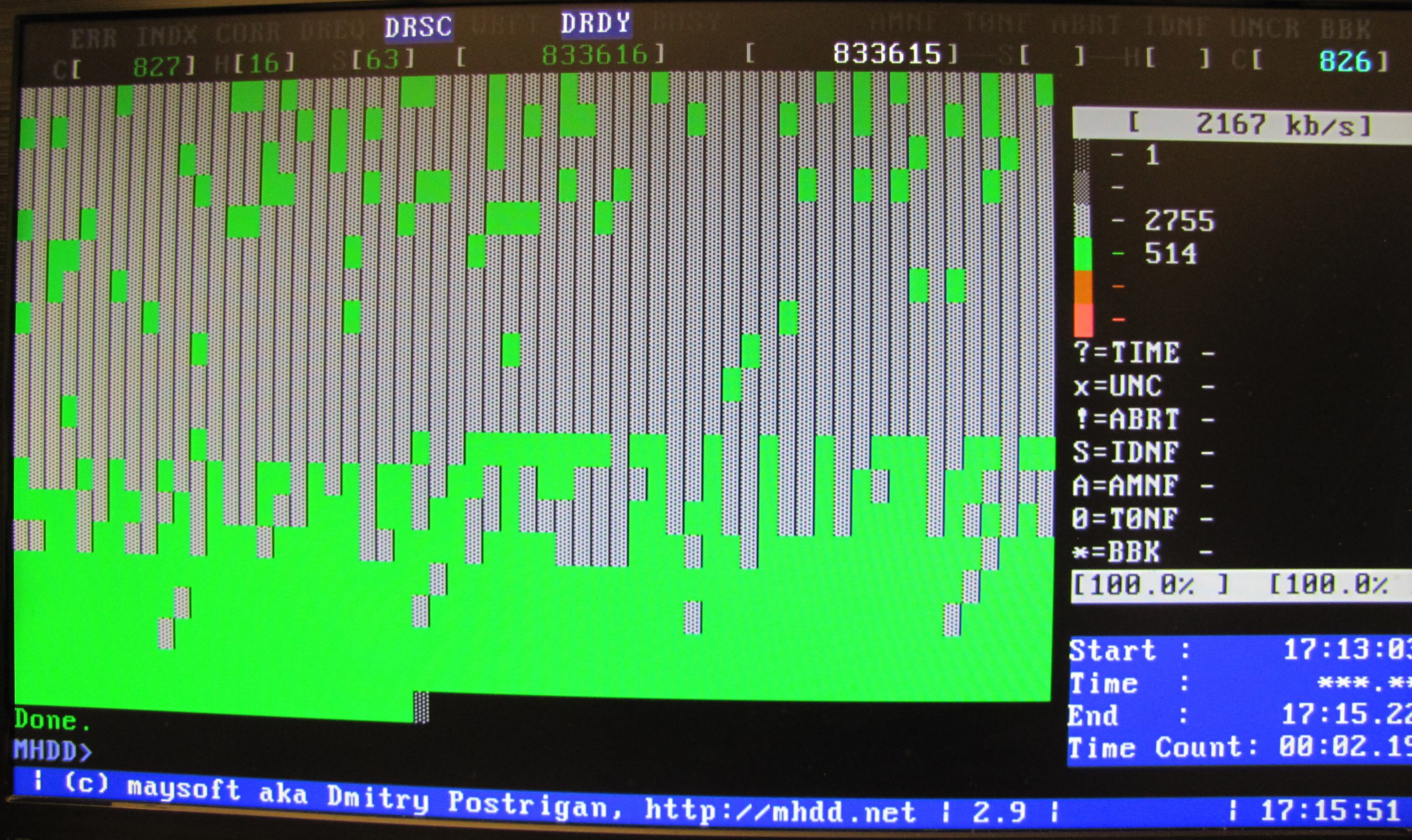
This drive is fortunately in perfect health, alongside having excellent bearings. In general, this drive has been quite impressive when in use, it’s certainly a keeper.
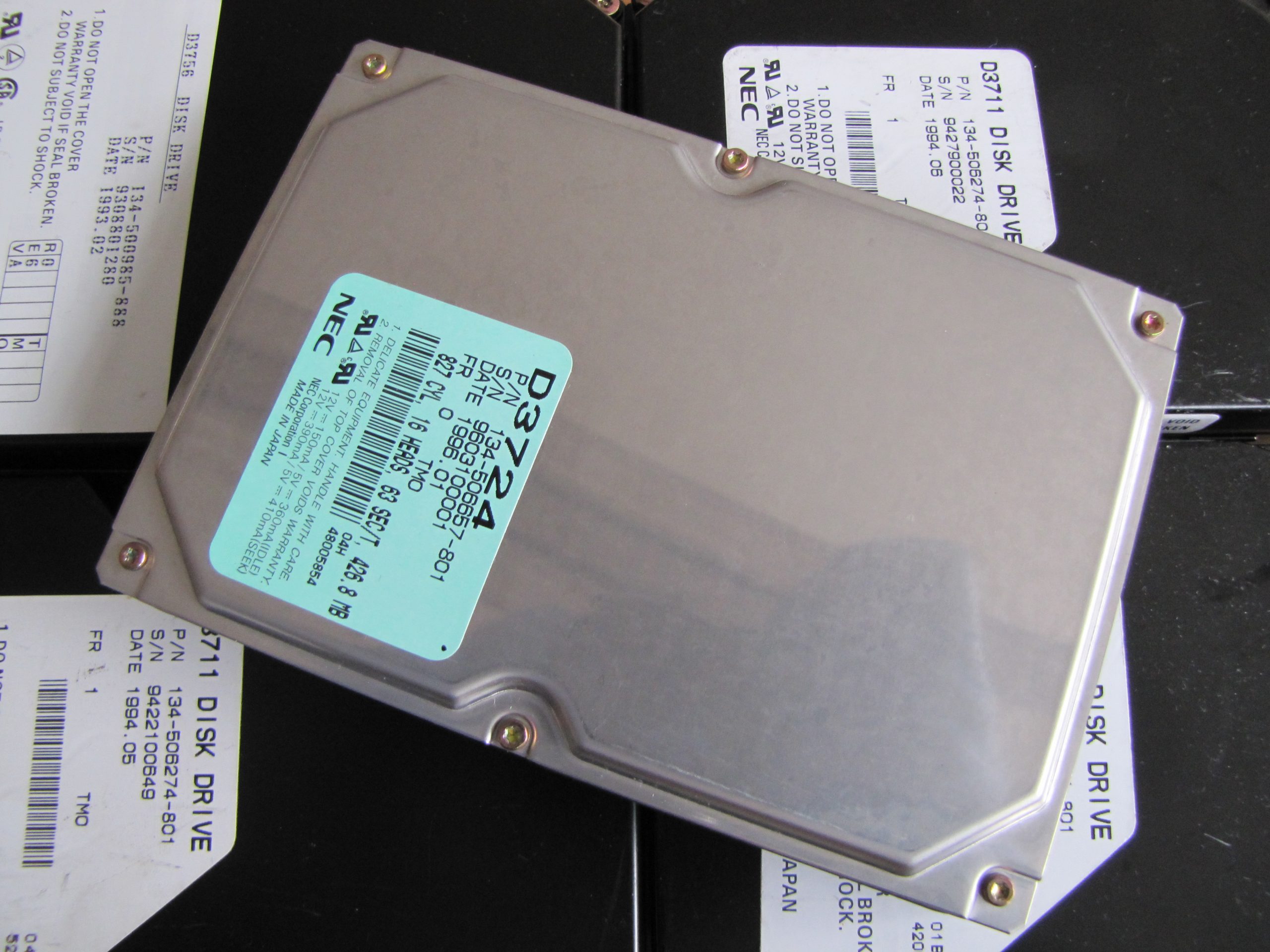
So, there we are, the humble NEC D3724. These certainly aren’t common drives by any stretch of the imagination, but they are an important element in NEC’s hard drive history, which would end only two years after this drive was produced (when concerning original designs).
It’s bitter-sweet that this HDA design was killed off by NEC, but it’s safe to say it most assuredly had some impact into NEC’s strategy regarding how they would go forward with the DSE series, alongside their higher end SCSI/enterprise drives.
If you missed the video I made on this drive, you can find it here: